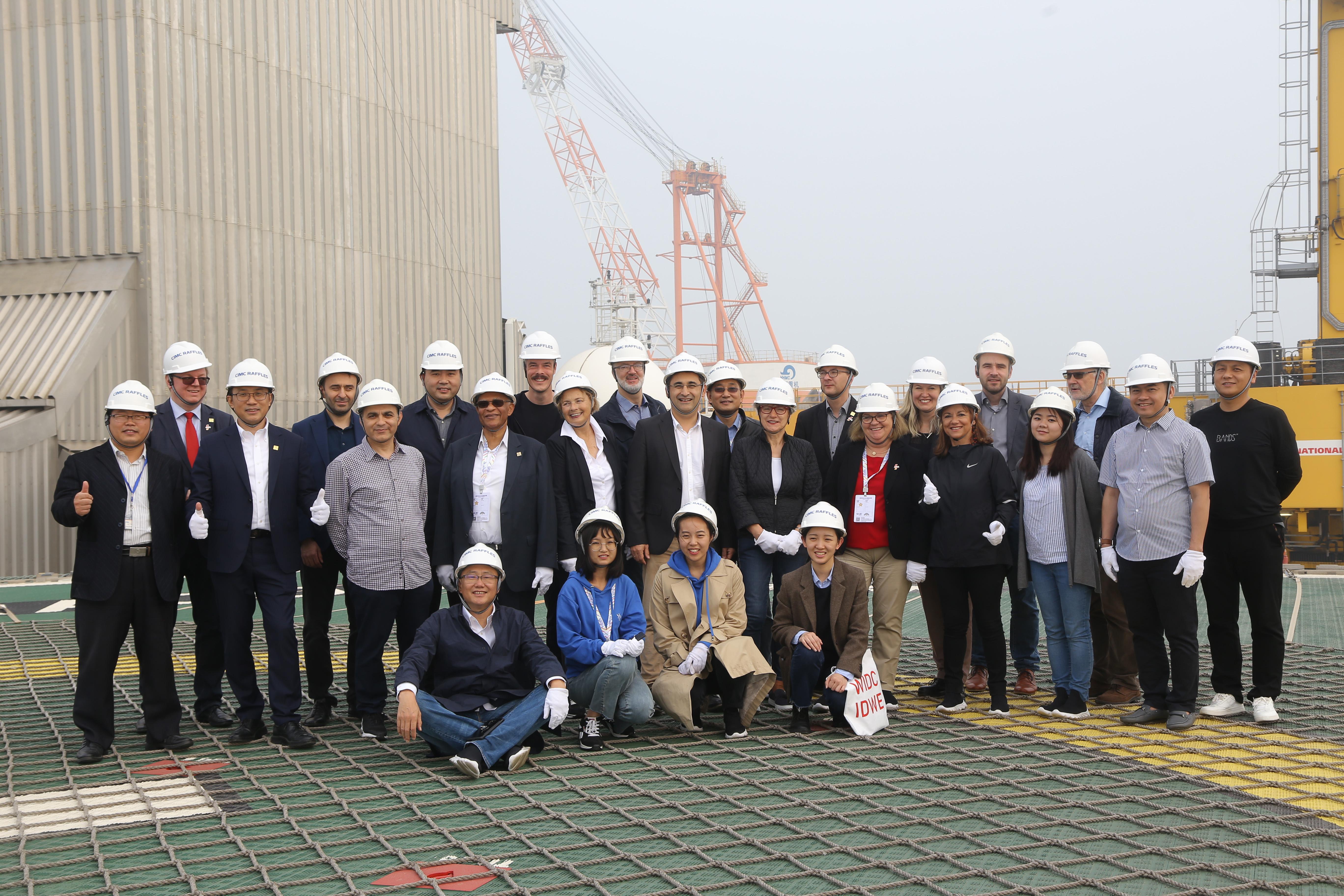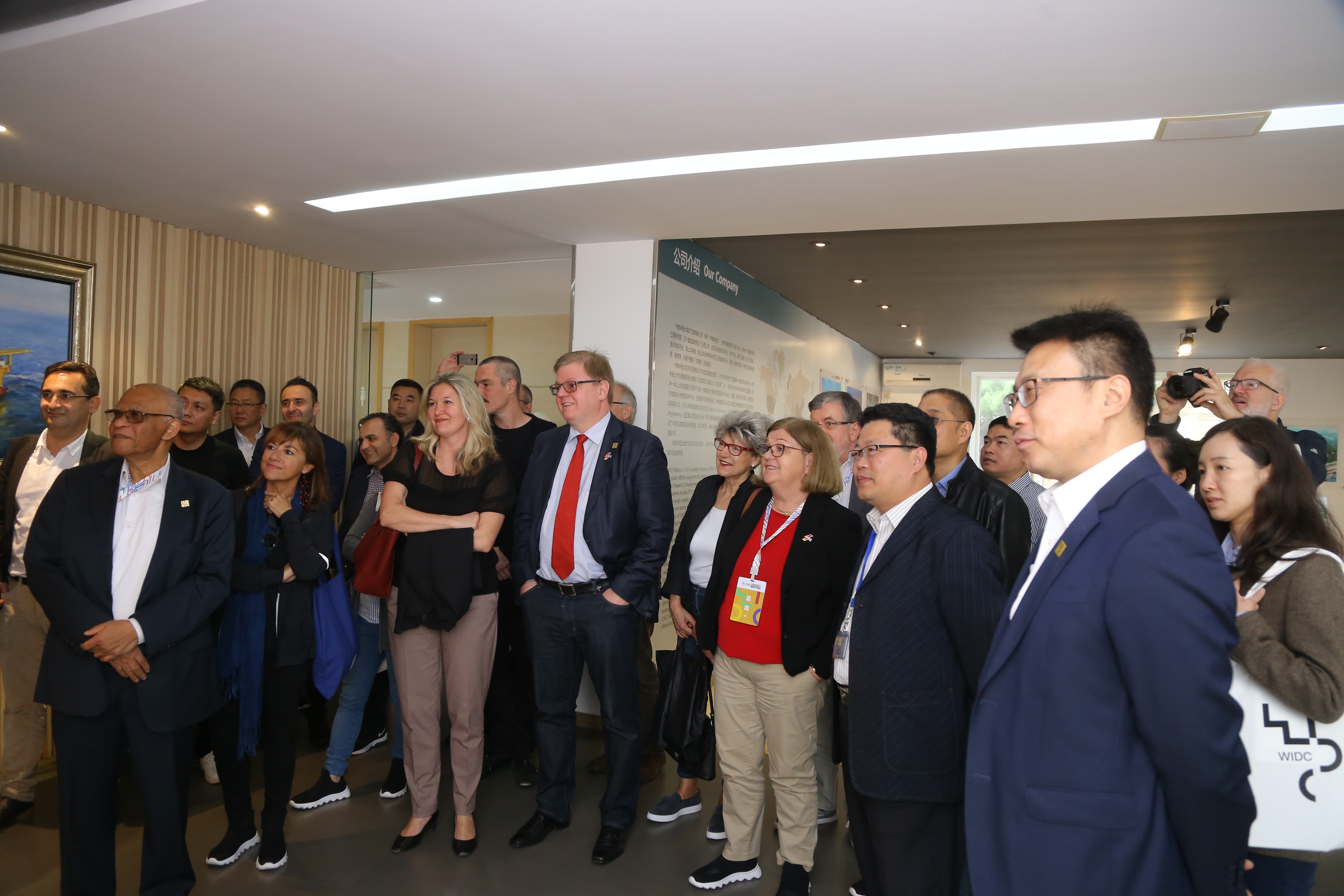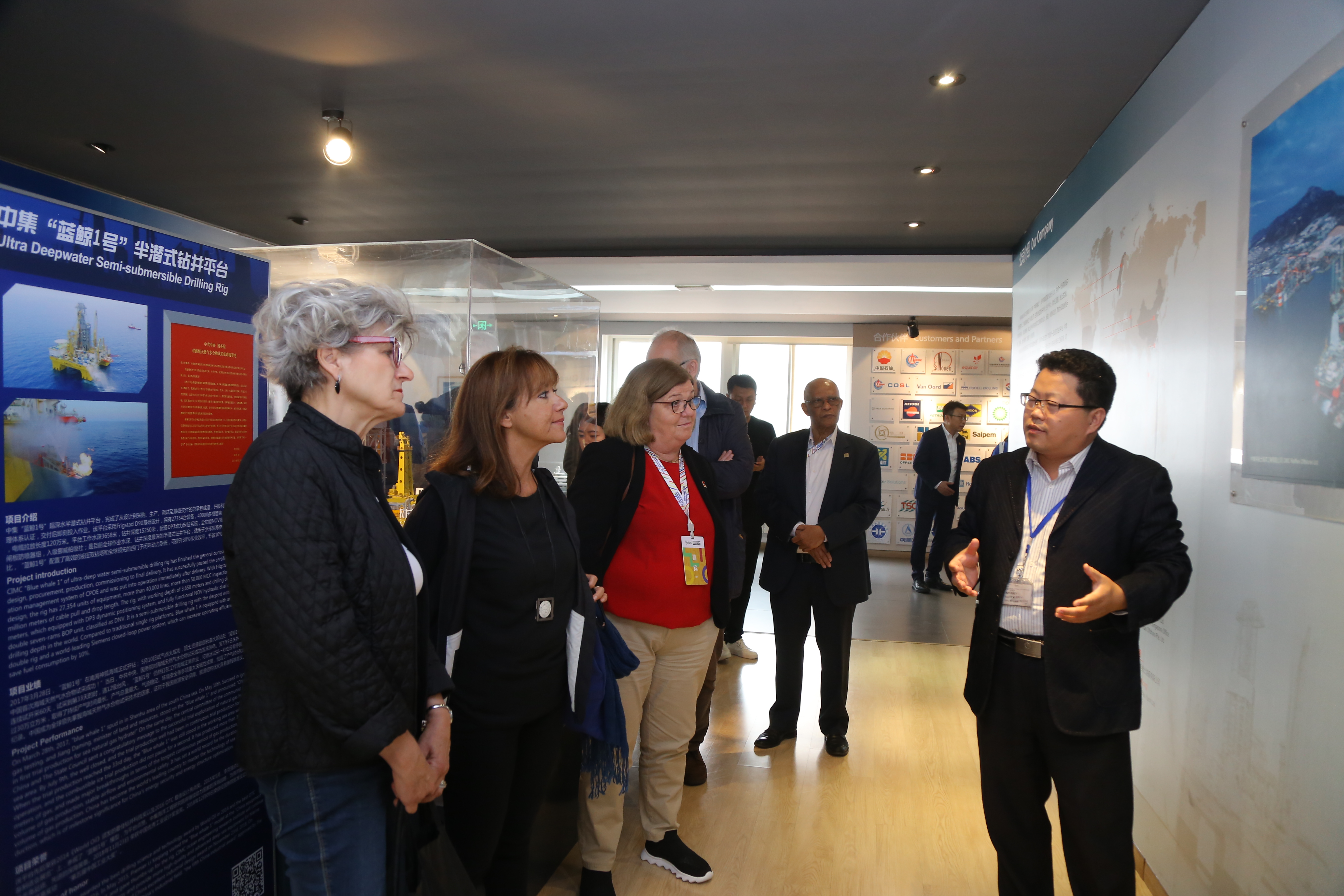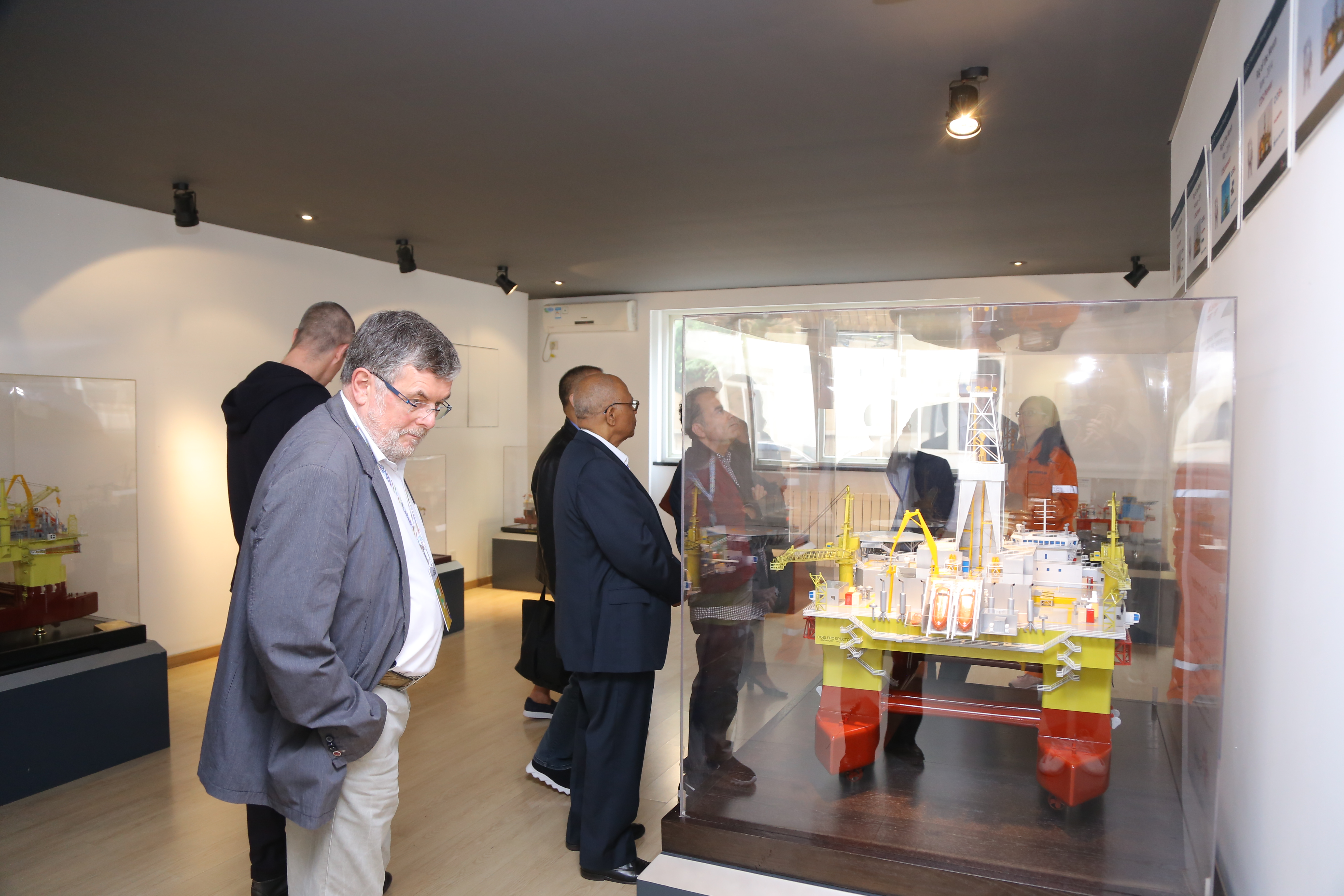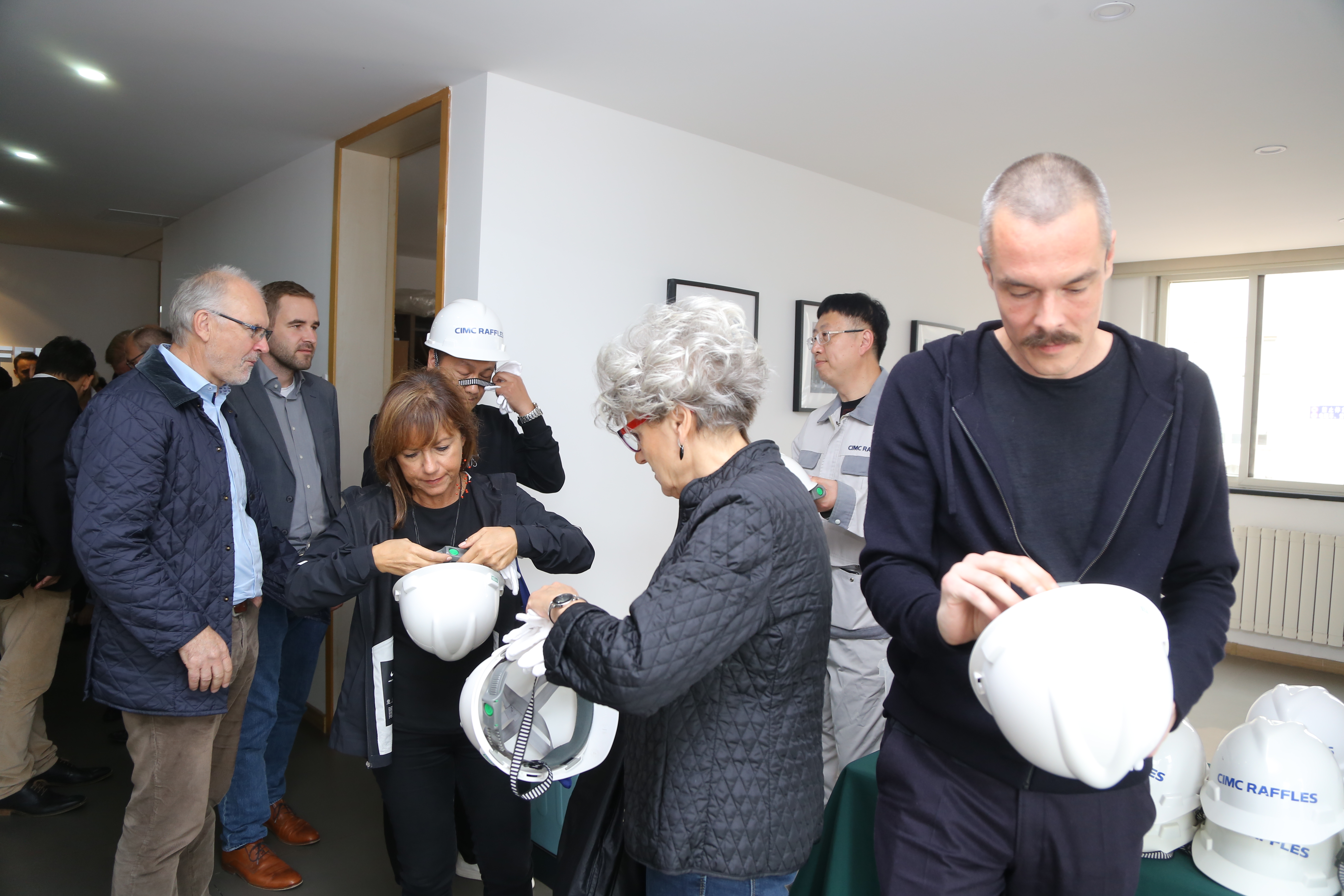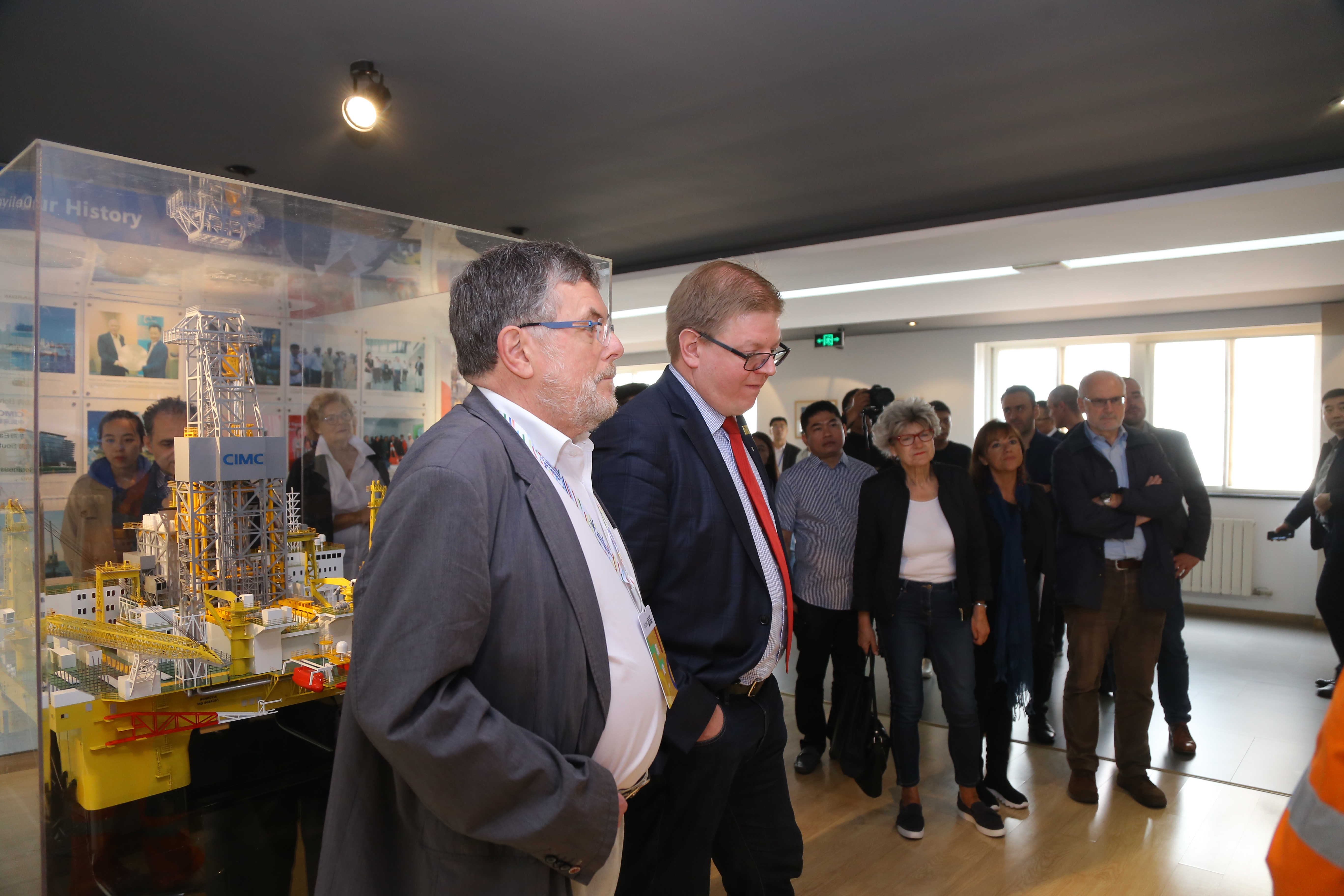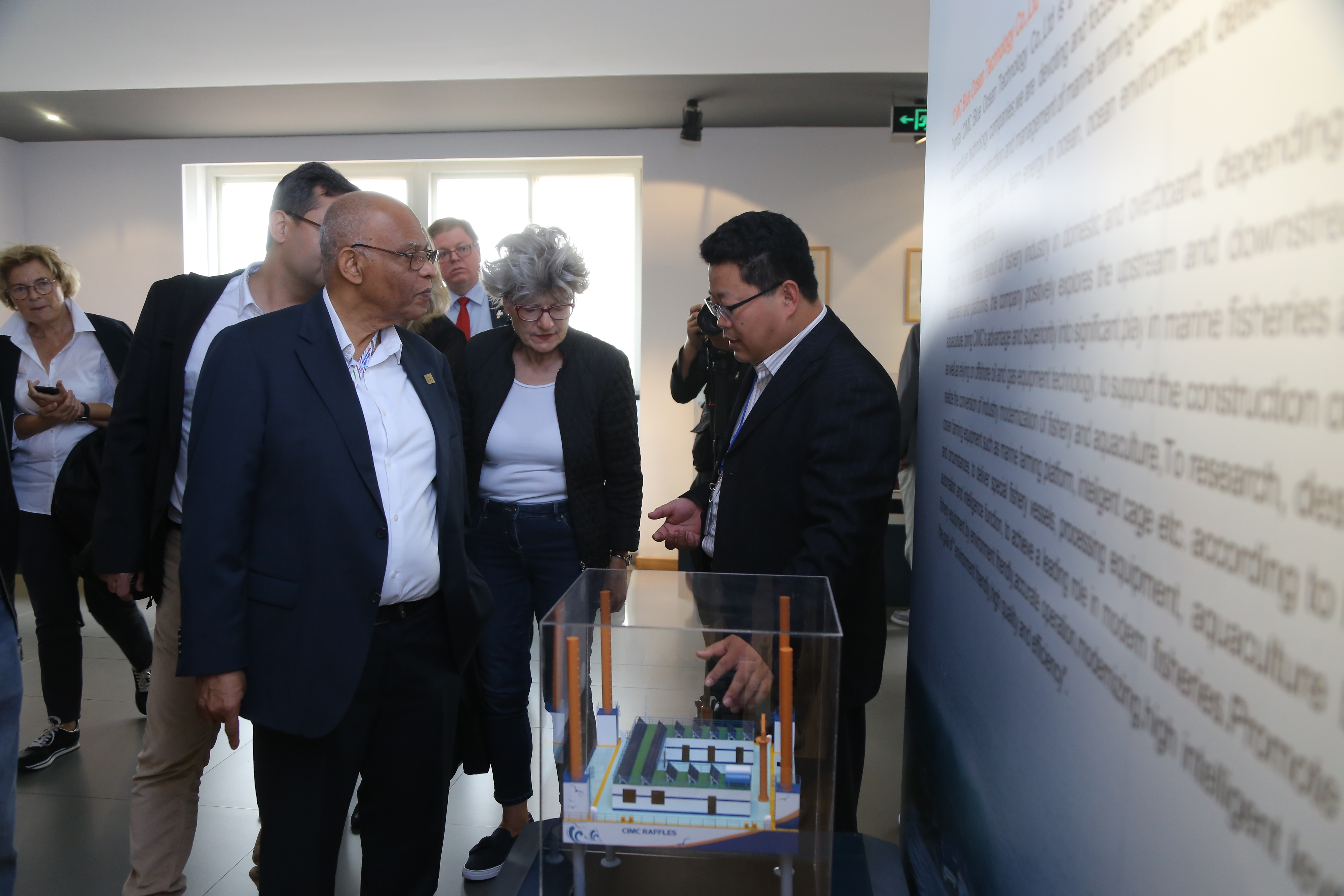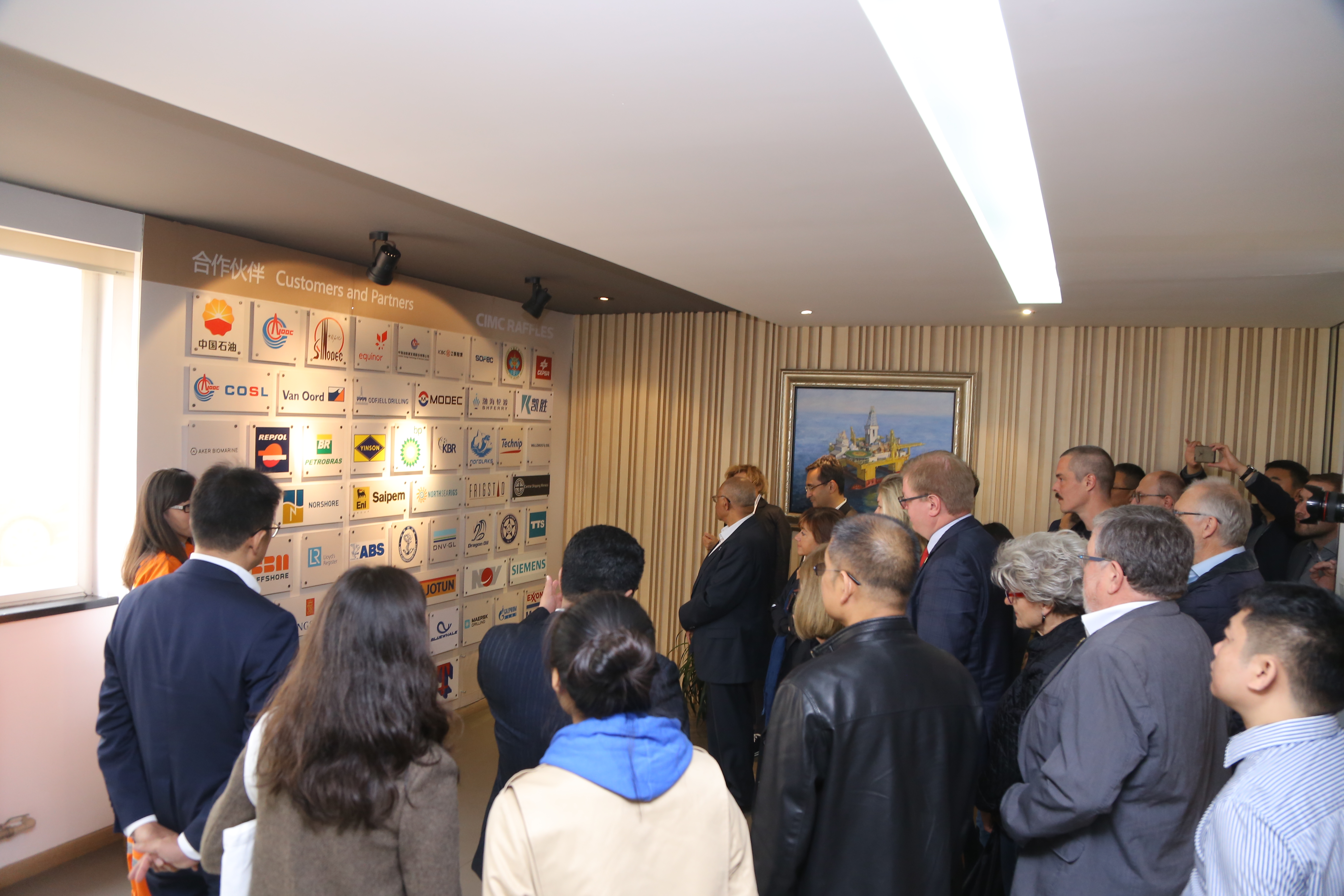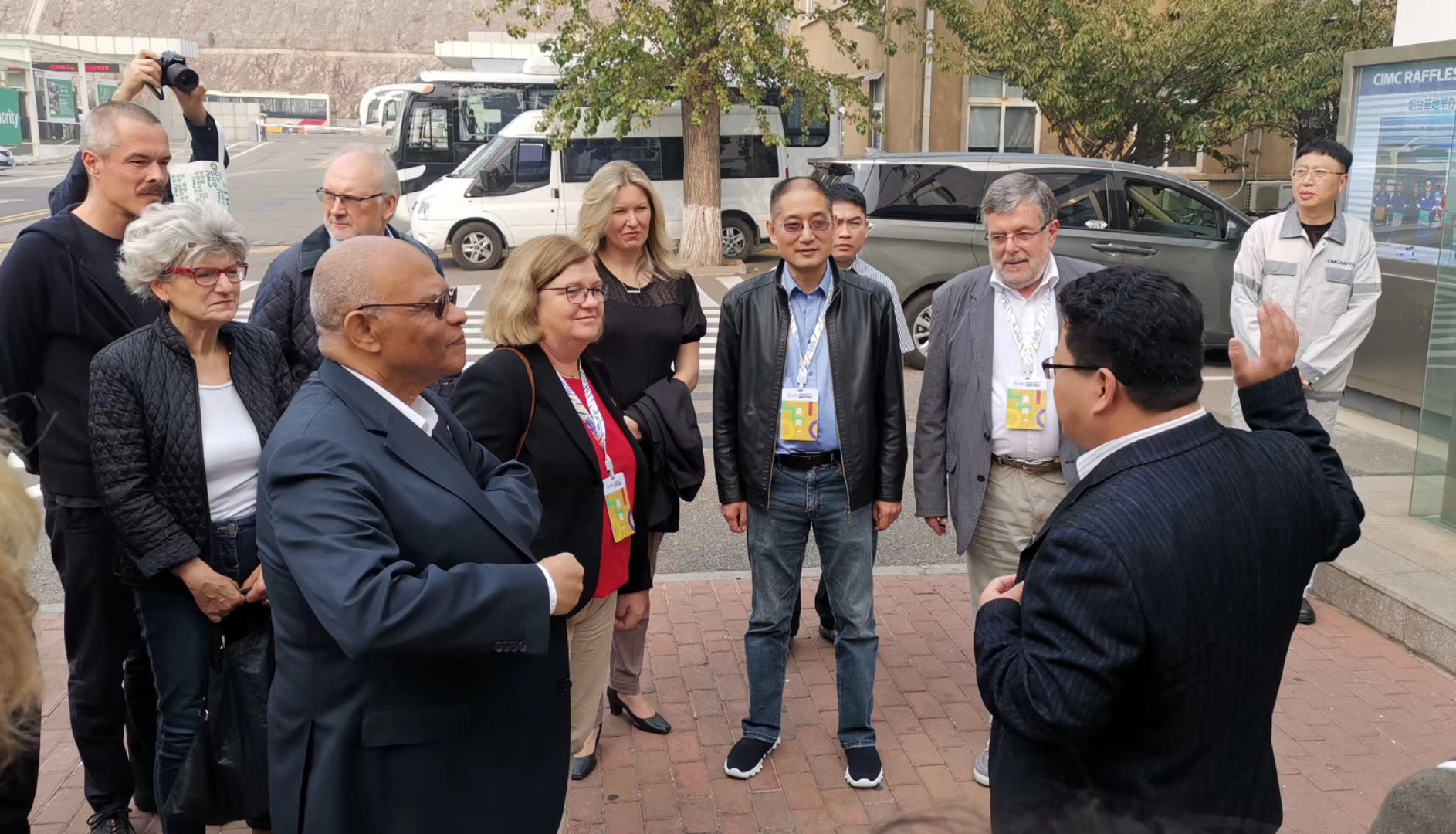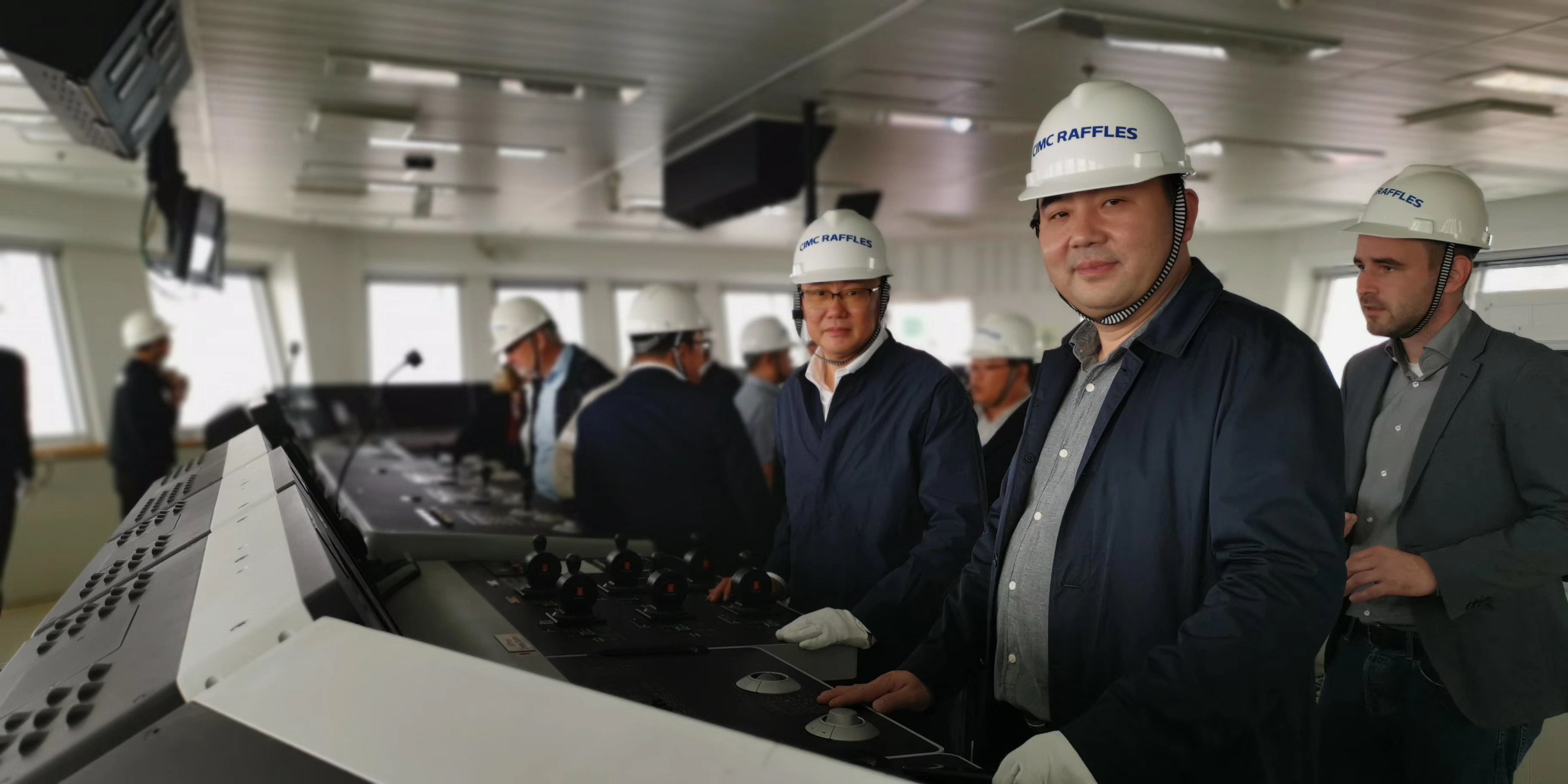-
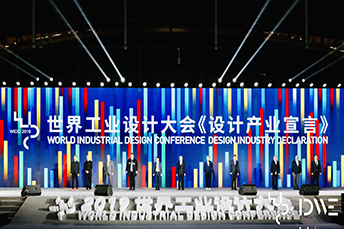
40 Countries Jointly Established the Global Design Industry Organization and Issued “Design Industry Declaration” in Yantai!
-
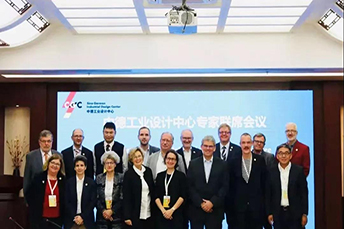
What did German Experts Do at WIDC2019?
-
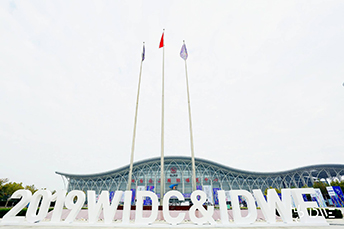
The First Industrial Design World Expo--WIDC Has Started the Second 100-year of Industrial Design
-
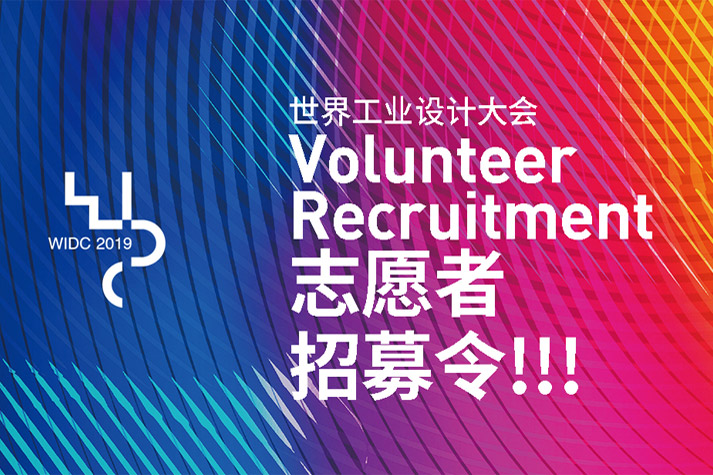
Volunteers Wanted for 2019 World Industrial Design Conference!
On October 18th, the German Design Expert Committee of Sino-German Industrial Design Center attended the 2019 World Industrial Design Conference. The Committee consists of experts from various industries including smart manufacturing, new materials, new energy, and new media. It helps enterprises to transform and upgrade, accelerates the design industry to integrate and push forward practical cooperation between China and Germany, which brings a strong impetus and support for the development of world industrial design industry.
Heidi Kröemker, President of Sino-German Design Expert Committee, Attended the Opening Ceremony and Gave a Speech
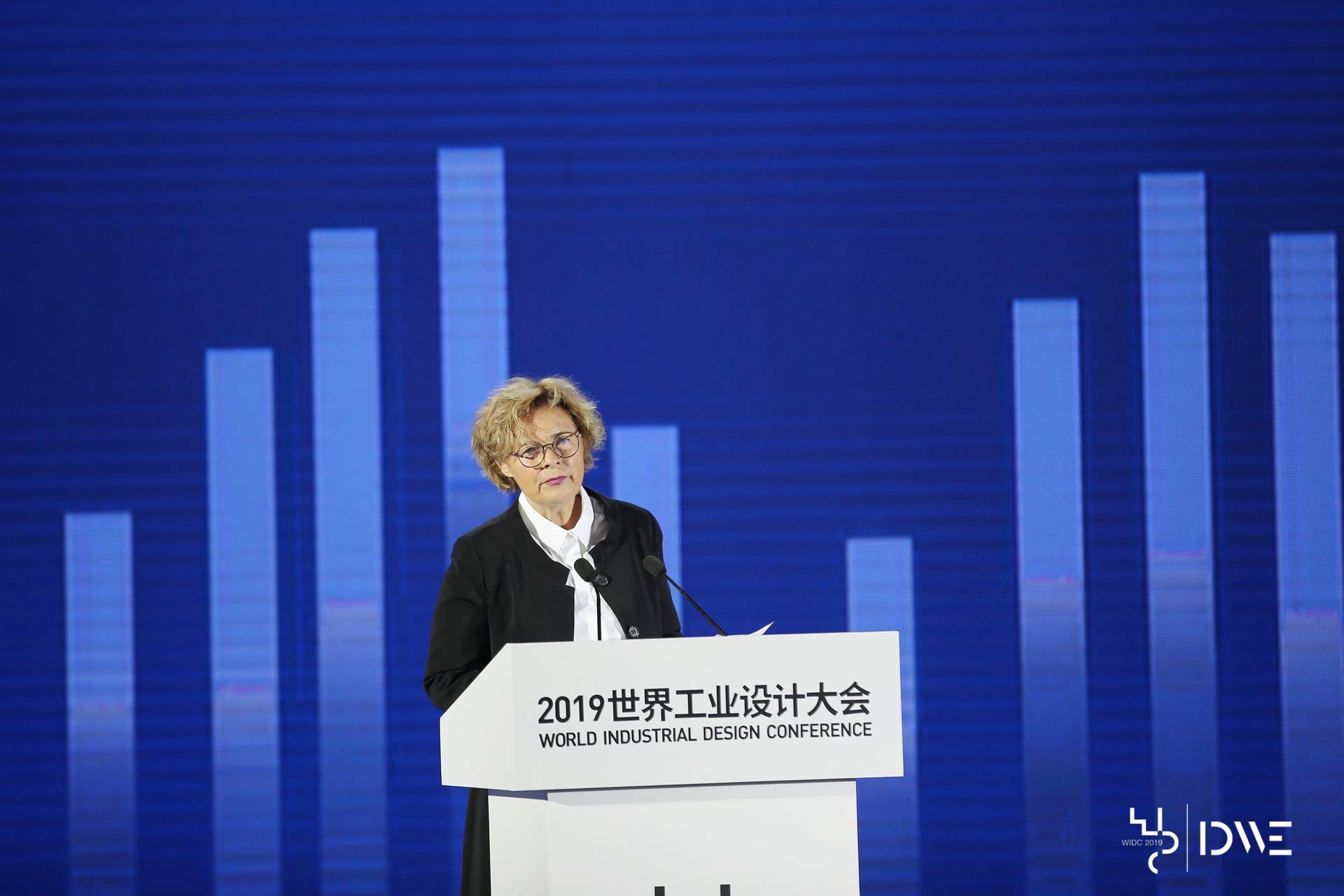
Industrial design is the strong motor of economic growth, just as the theme of this conference “Design Sparks Innovation Engine”, China and Germany have reached important consensus on cooperation in some respects like Industry 4.0, industrial design, and building an international platform: The Sino-German Industrial Design Center, which links global science, technology, design, supply chain, financial, talent and innovation resources, promoting economic and social development.
The Sino-German Design Expert Committee, as the think tank of Sino-German Industrial Design Centre, is committed to promoting exchanges and cooperation between China and Germany in the field of design. Taking this conference as an opportunity, I will make every effort to lead the experts from the field of intelligent manufacturing, industrial design, new material, new media and so on to conduct the Sino-German Industrial Design Expert Committee Joint Meeting, discuss with the local enterprises, make a contribution to the industrial design development in China, the world and the better life of mankind.
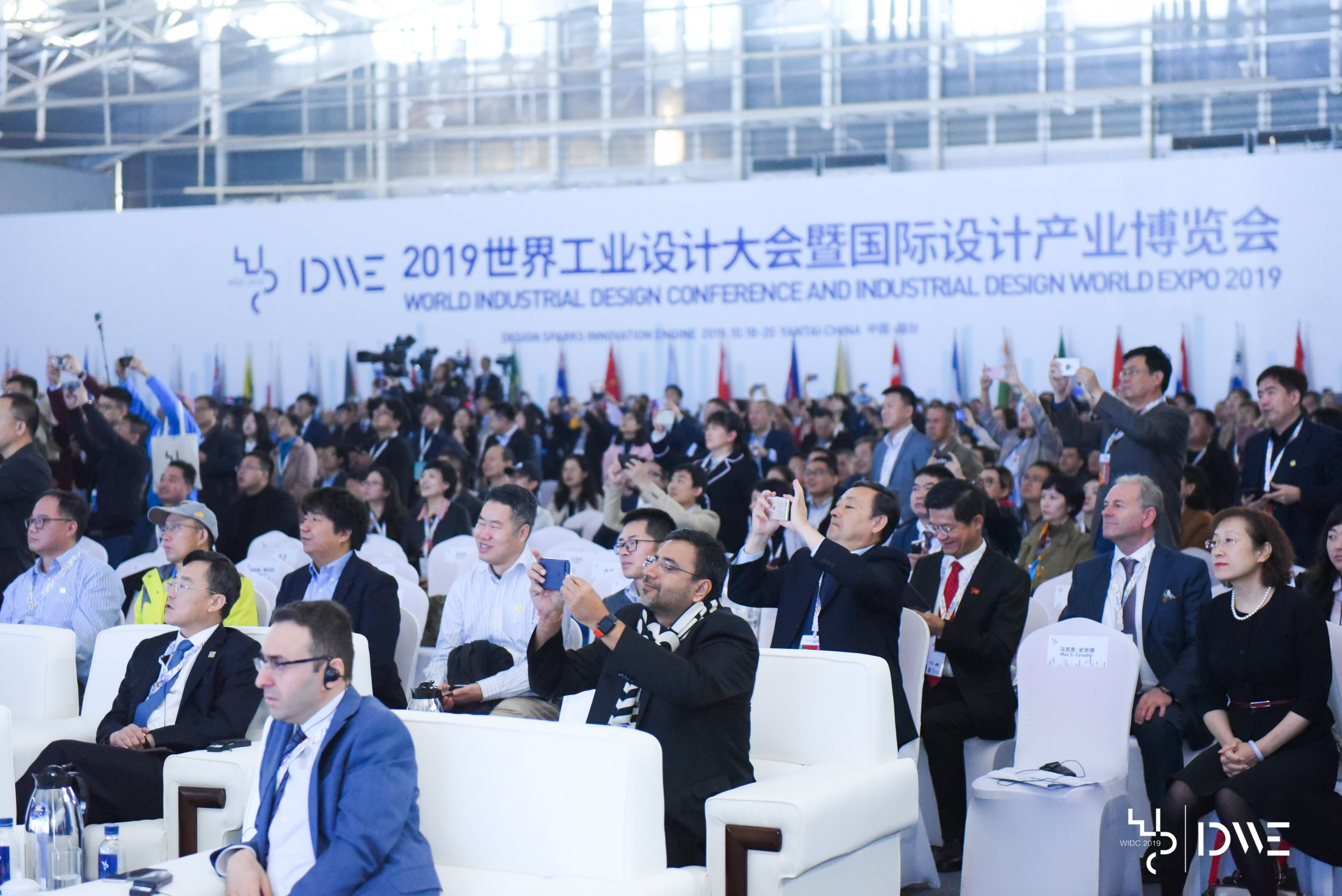
Sino-German Design Expert Committee Workshop
Sino-German Industrial Design Expert Joint Meeting
During the Conference, the Sino-German Design Expert Committee held three workshops. With the themes of "Integration & Innovation of User, Design &Technology", "Intelligent Manufacturing: Digital Transformation & Management", "The System & Future of Smart City ", experts from Germany discussed from different perspectives. The three workshops were hosted by Dr. Yuan Xiaowei, Vice President of Sino-German Design Expert Committee, and lasted more than ten hours with packed audiences.
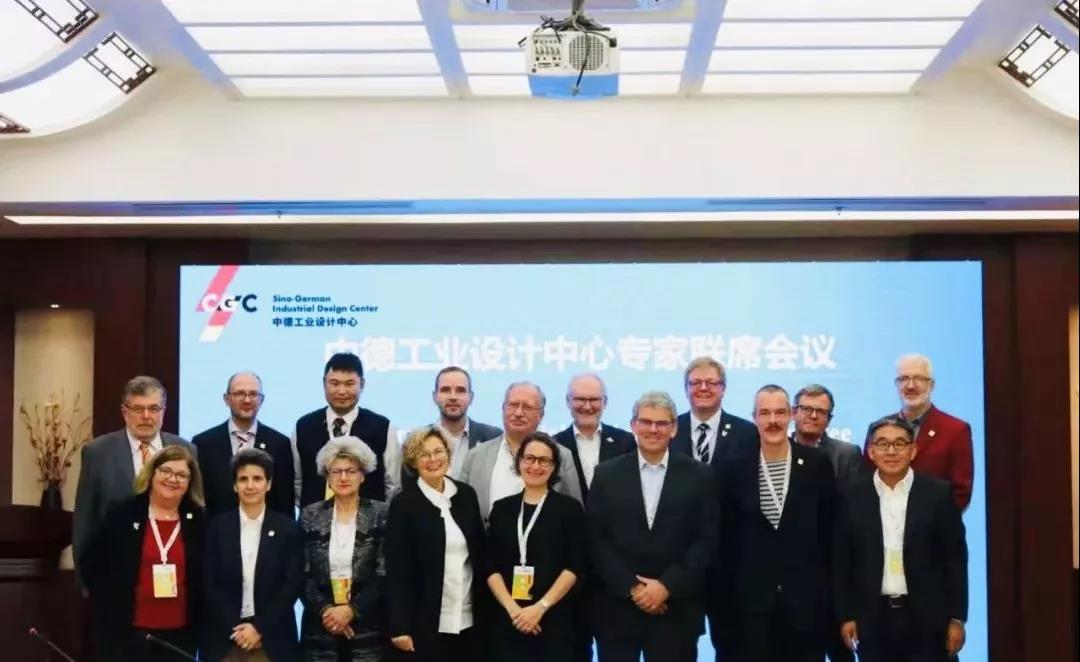
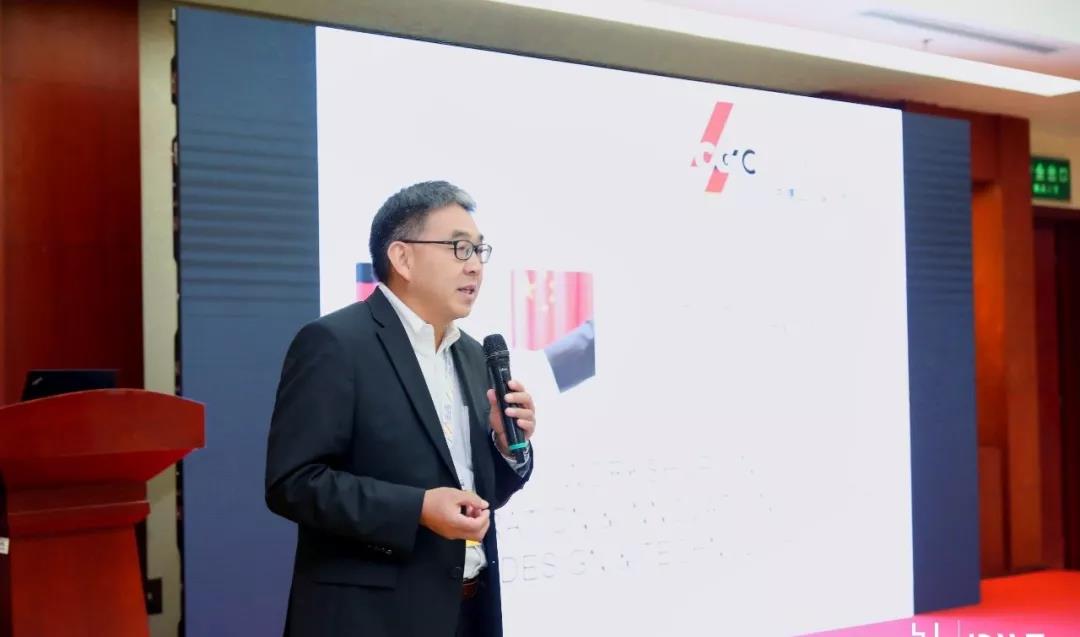
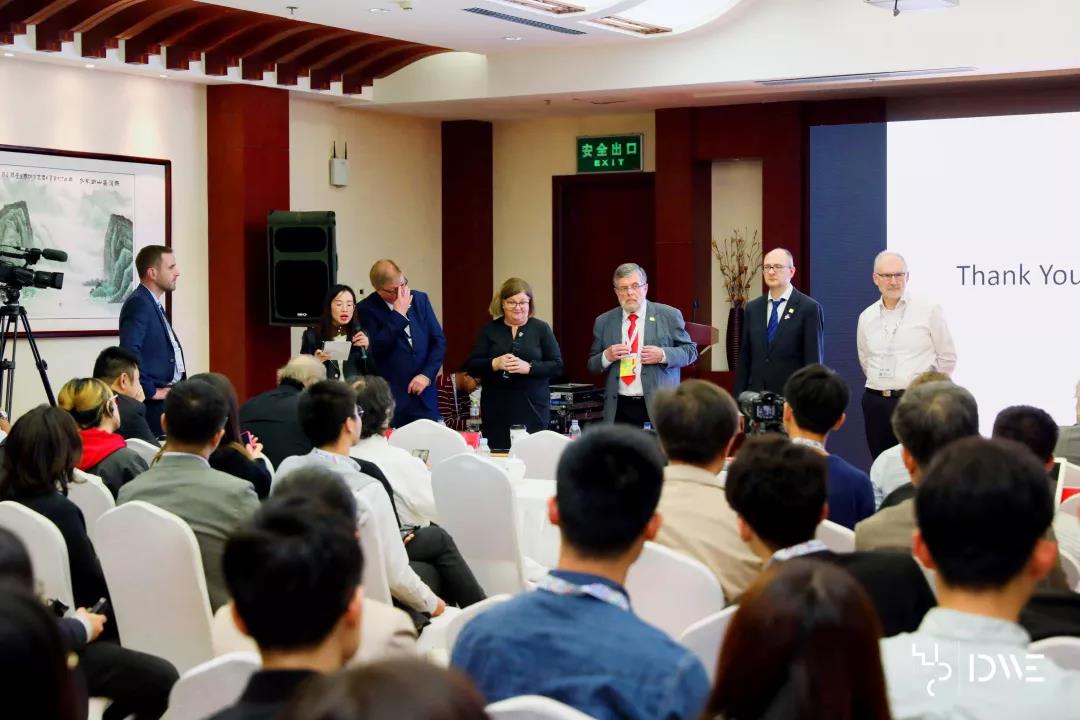
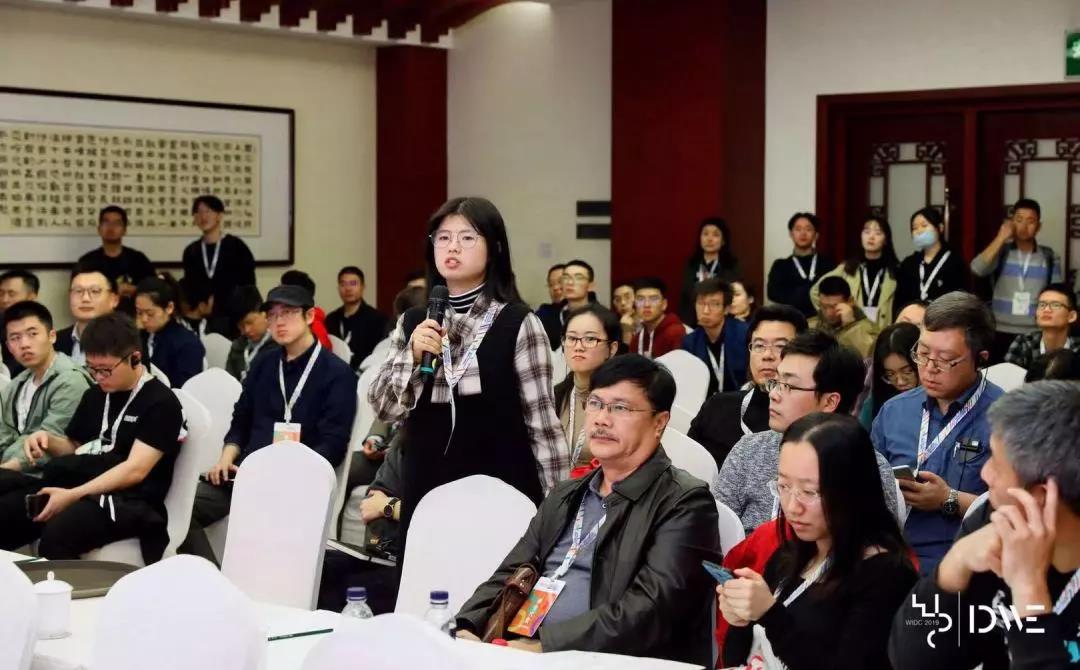
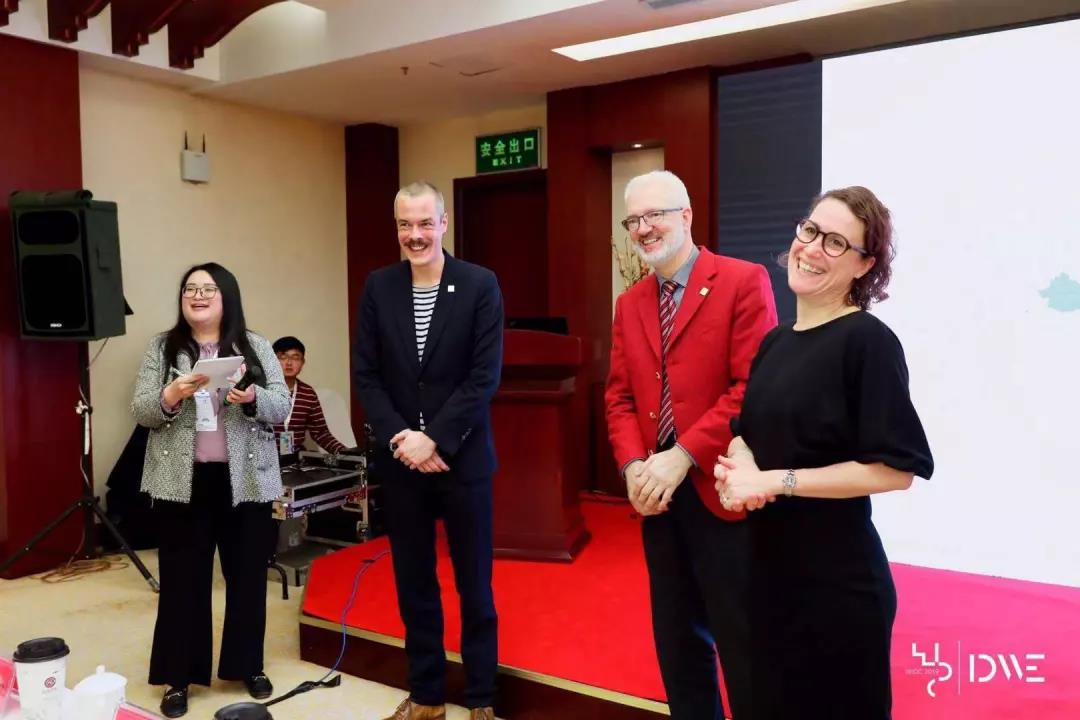

Workshop A. Integration & Innovation of User, Design &Technology
Design as the Driver of Brands
Speaker: Christiane Bausback
Managing Director of N+P Industrial Design GmbH
Research Interest: Industrial Design and Product Design
Speech Summary: Designer's cross-industry perspective is the key to innovation. N+P has a set of cross-industry research methods that can support overall thinking and achieve brand synergy.
We work for and with our users. The design needs to consider all stakeholders in order to observe and discover problems from different perspectives.
Perfection does not mean success. The best design is a combination of idealism, economy, and feasibility.
The design turns vision into reality. But our goal is to constantly question established norms and ready to rethink and reshape the future. Goals and vision are decisive factors of brand image. Vision is a promise to turn opportunities into reality.
"Be relevant or die" tells us that we can only survive by having a spiritual dialogue with consumers in the interests of customers and good customer experience. With a firm conviction and vision, a brand can consciously position itself on trends without being stuck on their initial entrepreneurial course and goal.
As part of brand management, design requires a certain level of decision-making power to ensure overall consistency of brand experience and business.
Managing companies by content are becoming increasingly important. Enterprise data is scattered in silos, resulting in loose management. Therefore, collaboration becomes a primary task for effective work.
Intercultural User Interface Design
Speaker: Heidi Kroemker
President of Sino-German Design Expert Committee
Research Interest: Smart Cars, Human-Computer Interaction Design, etc.
Speech Summary: Increasing globalization requires a new perspective on product design. Products must also be adapted to different cultural environments. To achieve this, one must consider different competitors in the target market and cultural differences in the environment in which a product is used. How to make our products meet the needs of the world market? How to meet the needs of different customers around the world?
To answer the above questions, we must first understand the impact of culture on social development. Cultural orientation is a type of tacit knowledge that is difficult to transfer to others. The correct way is through:
Localization: Localization development of "Specific Culture Package" for specific target markets or target groups.
Internationalization: Develop a basic structure that can meet the needs of customers from different cultural backgrounds in the future. At present, structural and technical prerequisites have been available.
Globalization: The development of international standards of "No Cultural Differences".
Workshop B. Intelligent Manufacturing: Digital Transformation & Management
Process Optimization and Digitalization in Production and Logistics
Speaker: Holm Fischäder
General Manager of IPOL GmbH
Research Interest: Production and Logistics Management, Process Optimization for Production and Logistics Through Software
Speech Summary: To some extent, production means timely and balanced supply and production. Process design plays an important role in production. The basic principle of process design is to be able to incorporate best practices of the industry and create excellent, sustainable and standardized processes. In this process, the role of digitization is very important.
In Germany, we have realized digital logistics and developed a digital logistics management platform suitable for various types of enterprises. This platform is characterized by small investment, fast response, and easy installation, covering all aspects of intelligent manufacturing. It is like an industry radio, capable of transmitting information between multiple channels and interconnecting different facilities.
The integration of these functions and applications can make all aspects of production and processes transparent. The instant sharing of information can speed up the operation of logistics, like the operation of a forklift which can be fully automated.
What is more valuable is that digital platforms can help us collect information and form heat maps, which ultimately help companies improve production routes, such as the improvement of logistics areas.
Feasible Processes for Working with 3D Models in Digital Product Development
Speaker: Markus Färber
Partner and Senior Software Engineer of Softvise
Research Interest: Computer-aided Production Planning, Real-time Processing, and Visualization of Super 3D CAD Models and 3D Laser Scanning
Speech Summary: Today I will share with you the application of 3D modeling in product development. We will discuss with the cases. The first is a turbine with 70 million spare parts. In order to manufacture such large equipment, the manpower, material resources, and financial resources are conceivable. This also requires that we cannot make any mistakes in the manufacturing process, it will cause irreparable losses, but how to ensure zero mistake in the construction ---- 3D Modeling.
We can make a 3D model through virtual technology. We can see different parts of this turbine in the display, and enter the database to understand the information of each part. We can also have a virtual meeting anytime and anywhere with any relevant engineers to review and optimize a component to ensure the design is flawless.
3D modeling can also be applied to modern factories and smart logistics. The data collected by 3D technology can help us make decisions and construct. It can find problems that cannot be observed by the naked eye and simplify complex problems.
Although the upfront cost of 3D technology is relatively high, as the application is improved, it will gradually reduce the cost and make the work efficient and simple.
Change Processes and Shifting Sets of Competences
Speaker: Gudrun Frank
Founder and Business Owner of Exprobico
Research Interest: Ergonomics, Industrial Planning, Staff Development, Competency Training
Speech Summary: What kind of capabilities should one have in the process of digital transformation? Generally speaking, it is data analysis, data transformation, data logistics, data security, and learning capabilities.
There are many talents in modern society, but it is difficult to find talents in all directions. If we don't know ourselves well, how can we develop new capabilities or make our capabilities reach a higher level so that we can always be invincible in a rapidly developing society? The answer is to exploit your own potential through the evaluation and diagnosis of the competency system.
But the more important role of the competency system is to use data as a support to improve the performance of a team or organization. Teams and organizations need to adapt to changes in users and need to cooperate in different contexts at any time. This requires that the competence of each member can be designed and tested.
For example, in the 5C methodology (Change, Cadreman, Customer, Check and Culture), each “C” is divided into 5 levels. According to the current level in each C, a spider graph for competence analysis is formed. The competence elements are analyzed accordingly to provide guidance for further self-improvement.
An excellent competency evaluation system can not only test the results of talent cultivation, create a talent cultivation eco-system, but also provide authoritative, credible, and unified third-party evaluation services for talent cultivation, evaluation and employment.
IT-Security for industry 4.0
Speaker: Antonius Sommer
Former Managing Director of TÜViT Standard
Research Interest: IT Certification, Security Certification
Speech Summary: TUV is a technology inspection company with a history of 200 years. It mainly conducts compliance inspection and certification of product safety standards. TUV certification in the field of information security is synonymous with reliable and trustworthy service and products. Today we will talk about the role of IT security in Industry 4.0. Industry 4.0 can be understood as an intelligent manufacturing revolution. It shows a new ecosystem - a new factory system consisting of machines, people, and software. But this factory does not just refer to one company, but an interconnected system worldwide.
During global cooperation, IT security issues are inevitable. Each data should have an electronic ID card, just like a human ID card and passport. It has a certain privacy and does not allow illegal tampering and collection.
What is security? There are two expressions in English: Secret (privacy, secret), Security (personal security). The security we are talking about includes both concepts.
Once network data is obtained illegally, it is very likely to threaten personal security. For example, if your identity information is stolen for illegal activities, your life and property will be threatened at any time.
IT functions are at the top of operations, and most people are not familiar with this. But in daily life, password settings and ID information are issues related to IT security.
A specific security system should be complete. This completeness means that the design should guarantee security from the very beginning. For example, for ID information security, it should not start with the ID number, but from the identity recognition, to value security issues from the source of the design.
New Materials for Lightweight Construction and Structural Applications & Surface Technology
Speaker: Heinrich Kern
Professor of Technology University Ilmenau
Research Interest: Materials Science, Composite Materials
Speech summary: All researches related to innovation and safety is related to materials. Although our ideas, thoughts, and models are presented in the form of virtual reality, to realize those needs to rely on suitable materials.
Materials are a hidden driver of innovation.
The following typical innovation cases are all benefited from the discovery of new materials. The electric lamp invented by Edison can only work for a few seconds. Some people later used burnt paper as a material to extend the life of the lamp to an hour. However, it still needed to be replaced every day until Bach finally found the tungsten wire to make the life of a bulb up to several thousand hours.
There is one more recent example. The discovery of high-performance semiconductors has greatly improved microelectronic memory technology. Compared with today's memory chips, the memory chips of 2005 have the same size, but the memory has been greatly improved.
Materials are very important. Materials transform our ideas into reality.
Workshop C. The System & Future of Smart City
Smart City from Perspectives of the Future
Speaker: Sebastian Spundflasch
Researcher of Technology University Ilmenau
Research Interest: Road Transportation, Intelligent Transportation
Speech Summary: Smart city is mainly the application of information and communication technology. With the emergence of environmental and urbanization issues, the concept of a smart city has also changed, but it is mainly focused on issues such as sustainable development, technology and energy.
The prominent issues of smart city are intelligent travel and infrastructure issues. In addition, urban management issues like energy consumption reduction, environmental protection, and residents' happiness enhancement are also worth paying attention to.
When it comes to urban travel, multi-modal travel methods, such as bicycle + bus, shared travel, etc. can make our city cleaner and reduce congestion effectively. However, this multi-modal travel method needs to be supported by a complete infrastructure, such as bicycle lanes and dedicated parking spots. This can be borrowed from the practices of Nordic countries. If the government invests in improving bicycle-related infrastructure, most residents will choose to take bicycles.
In terms of energy, new solutions include converting walking energy into energy resources, zero-energy buildings (successful cases in Singapore and Berlin), photovoltaic lighting (charging during the day and lighting at night), and biogas (in Sweden and Denmark, above 90% household waste is recycled into biogas).
Energy shortage is a global issue. We can carry out international cooperation, exchange information, and conduct research in cooperation regarding this issue.
Methodology & Process to Generate a Smart City
Speaker: Christian Knapp
Co-Founder of BÜRO KLK OG
Research Interest: Architecture and Design
Speech Summary: All human behaviors are centered on humans, and smart city is no exception. Before discussing how to build a smart city, we need to understand a few concepts,
Sustainable development requires orderly cooperation between all relevant parties; multinational companies do not need to focus on implementing a unified global strategy but to achieve localization;
Diversified perspectives lead to diversified concepts and tools to provide a theoretical basis for sustainable development;
Explicit knowledge can be used as a basis for studying cultural differences, but only if it has authority, legitimacy, and timeliness.
Smart cities involve all aspects of human society, such as living, work, communication, energy, education, health, and scientific research, etc. How to build a smart city in terms of them all?
First of all, we need to have smart planning. The questions that need to be considered at the planning level are the implementation of planning, the operable planning method, standard steps for planning, how the plan realizes at the economic, cultural, ecological and social levels.
The second is smart acting: how smart solutions work together, how to localize and how the contingency mechanism is developed?
The third point is smart city residents. Can residents understand and adapt to the rules of smart cities? How to ensure the identity and procedures of residents in a smart city? How to meet the diverse needs of residents?
The above three steps are the correct ways we think to build a smart city.
City Logistics of the Future
Speaker: Yvette Körber
Chief Executive Officer of Amberg Loglay AG
Research Interest: Smart City Solutions, Urban Logistics, Building Information Modeling (BIM), Engineering Design Management
Speech Summary: Let’s talk about the future of smart cities from the perspective of logistics and transportation.
From a development perspective, there will be more residents in future cities, the smart city will face more development opportunities. Logistics transportation is a topic that cannot be avoided in urban development. We have found a new solution for future urban logistics - building an underground logistics transportation corridor.
Underground logistics transportation corridors transfer logistics transportation under the ground, which greatly reduces ground transportation space.
The underground transportation corridor will complement the existing road transportation network. What needs to be considered is transportation between different types of operations (such as shopping centers, factories, residential areas, etc.), which requires a suitable means of transportation to complete. This is a big challenge. However, once the entire logistics system is completed, the smart city of the future will be very promising. (At present, the underground logistics and transportation corridor project has been implemented in Zurich, and the investors are Chinese.)
Integrated Smart Mobility in Urban Areas
Speaker: Ulrike Stopka
Professor of Dresden University of Technology
Research Interest: Communication Science, Mobility and Transportation Management
Speech Summary: City's integrated smart travel is a popular research topic. At present, there are 1.2 billion vehicles in the world, and it is still growing at a rate of 100 million vehicles per year. Therefore, people urgently need a more intelligent way to travel.
What kind of travel can be called smart travel?
The first is to meet the needs of different groups of people. The second is to provide more possibilities for travel. The current urban travel methods are divided into underground travel and ground travel. Air taxis should be one of the development trends in the future. The third is to be safe and convenient. The fourth is to be able to integrate travel modes, which requires the establishment of a travel integration platform to facilitate smooth switching among multiple travel modes.
Media System for Smart City
Speaker: Matthias Schnöll
Professor of Anhalt University of Applied Sciences
Research Interest: Intelligent Media System, Digitalization of Human- Machine Interaction
Speech Summary: The media system of smart cities to be discussed here covers multiple research fields such as autonomous driving, artificial intelligence, full-view camera, virtual reality, education, and mobile application. The comprehensive use of intelligent technologies such as target detection, real-time application, microcomputer, big data, mobile network, online service, and streaming media requires the development of a new framework system and higher requirements for network technology.
The high-speed network makes the application of new technology more convenient, and the application of new technology leads to new knowledge system and industry system. Strengthening international cooperation can effectively promote the application of new technology.
German Experts Visit Manufacturing in Shandong to Help Upgrade the Design Industry
International design experts and well-known designers visited Shandong manufacturing enterprises, promoted the deep integration of industrial design and different industrial fields, and help with major projects of Shandong's new and old growth drivers’ conversion.
